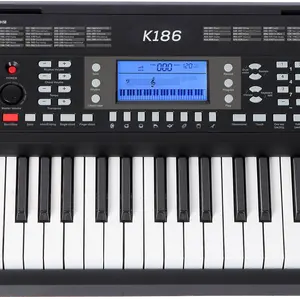
Wholesale Fashion Gifts Electric Piano Toy Digitale Piano Guangdong Piano For Kids


CE ISO Approved High End 120D Mono Bipolar 120W High Frequency Electrocautery Electrosurgical Unit Electrosurgical Instruments























Electric organs stand as a testament to the fusion of musical tradition and modern technology. These instruments cater to a variety of musical endeavors, from educational settings to concert performances. The adaptability of electric organs is evident in their design, allowing musicians to traverse genres and styles with ease.
The diversity within the category of electric organs is vast, with models ranging from compact, portable versions to more sophisticated, stationary setups. Key count on these instruments can vary, typically between 61 and 88 keys, catering to both novice players and seasoned musicians. The array of effects and sound settings available on an electric organ encourages a creative and explorative approach to music-making.
Electric organs are not confined to a single use-case scenario. Their utility spans across home practice, educational institutions, and religious establishments. The advantage of an electric organ lies in its ease of use, making it an accessible instrument for beginners, yet robust enough for professional use. The digital nature of these organs allows for a breadth of sound customization, which is indispensable for artists looking to craft a unique sonic signature.
The construction of electric organs involves a combination of quality materials and electronic components. The keys are designed to emulate the tactile response of traditional organs, while the internal circuitry is responsible for the vast soundscape that these instruments can produce. Durability is a key consideration, ensuring that even the most portable models can withstand the rigors of travel and performance.
Selecting the right electric organ requires consideration of several factors. The number of keys is crucial for the intended repertoire, while the variety of sound settings and effects can greatly influence the instrument's versatility. Potential buyers should assess their needs, whether for personal enjoyment, public performance, or educational use, to find a suitable electric organ within the extensive offerings available.
The role of electric organs in contemporary music cannot be overstated. They provide musicians with the tools to learn, play, and compose across a spectrum of musical genres. The integration of digital technology in these instruments has revolutionized the way organ music is produced and performed, making it more accessible and varied than ever before.